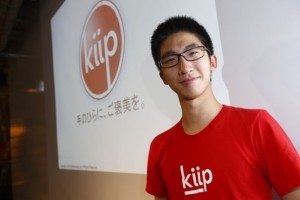Running anxiously between classes, I often find it difficult to allocate time to purchase healthy food. Nonetheless, without food to fuel my thought, my eyes begin to droop as I sit through my last lecture of the day. After reading Taylor Davis’s blog about JRINK, a company also introduced to my COMM101 class, I realized their product would serve as a great energy boost for my hectic and demanding schedule. In fact, many students would benefit from this healthy alternative. Therefore, the company should consider expanding to universities where their “juices can provide the essential nutrient boost [to] pressed for time” (JRINK Website) students.
JRINK’s unique value proposition, which is to “provide a healthy and convenient solution that nourishes the needs of modern day busy people,” (JRINK Website) will assist the company in differentiating itself among a chain of fast food restaurants that currently dominate university campuses. Even amongst my peers I have noticed an increasing demand for healthy food. Many students even postpone eating for unhealthy periods of time just so they can find an alternative to the unwholesome options offered nearby. JRINK’s product will be successful on university campuses as these students turn to their juices when they need a quick boost in between classes.
*Blog content collaborated with Brooke Besley
Internal Blog: Davis, Taylor “https://blogs.ubc.ca/taylordavis/2013/11/01/paying-big-bucks-for-a-small-salad-in-a-bottle/
JRINK Website. “JRINK for Thought – JRINK Juicery.” RSS. N.p., n.d. Web. 17 Nov. 2013. <http://www.jrinkjuicery.com/blog/>.
Figure 1: http://3.bp.blogspot.com/_Vats6vjv7o4/SkJ_sa5x2RI/AAAAAAAAAWM/8xBJY8BPH30/s200/student_running.jpg
Figure 2: http://www.jrinkjuicery.com/#about









